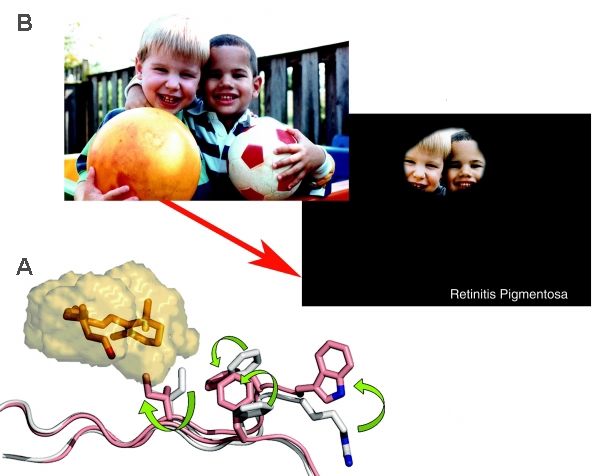|
|
Molecule of the Month December 2009 |
|
| Molecular Clues to Bothnia Retinal Dystrophy | ||

|
||
|
Cellular retinaldehyde-binding protein (CRALBP) is essential for mammalian vision by routing 11-cis-retinoids for the conversion of photo-bleached opsin molecules into photosensitive visual pigments. The R234W missense mutation within the human gene encoding CRALBP compromises visual pigment regeneration and is associated with Bothnia type retinitis pigmentosa (RP).
This work was carried out in the group of PD Dr. Achim Stocker by Xiaoqin He and Joel Lobsiger. References:
|
||